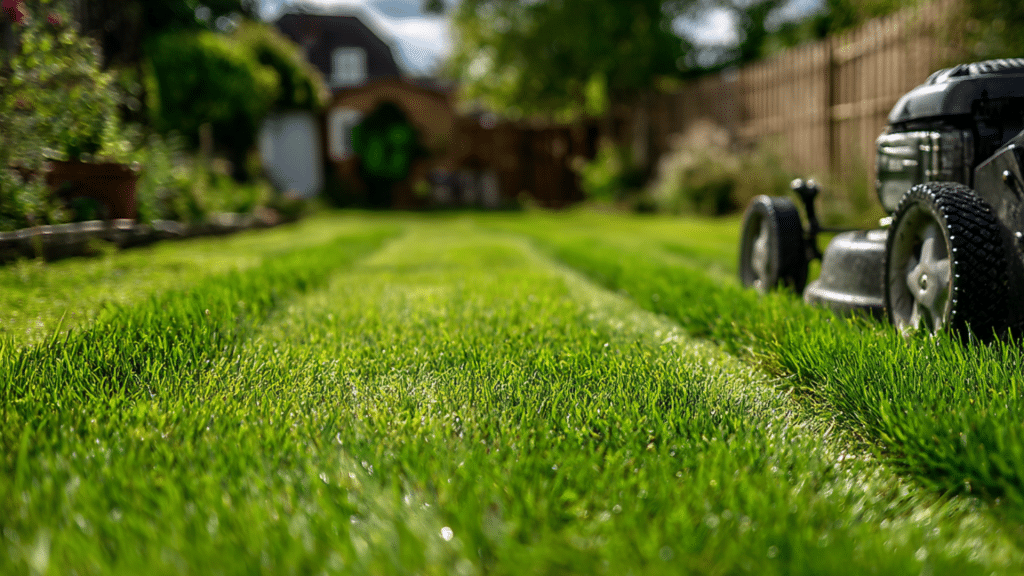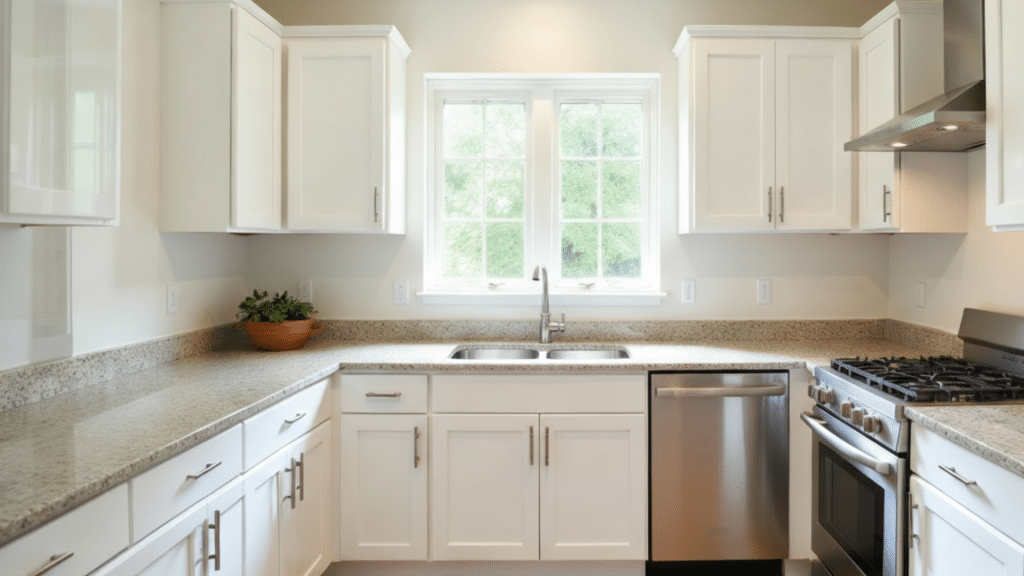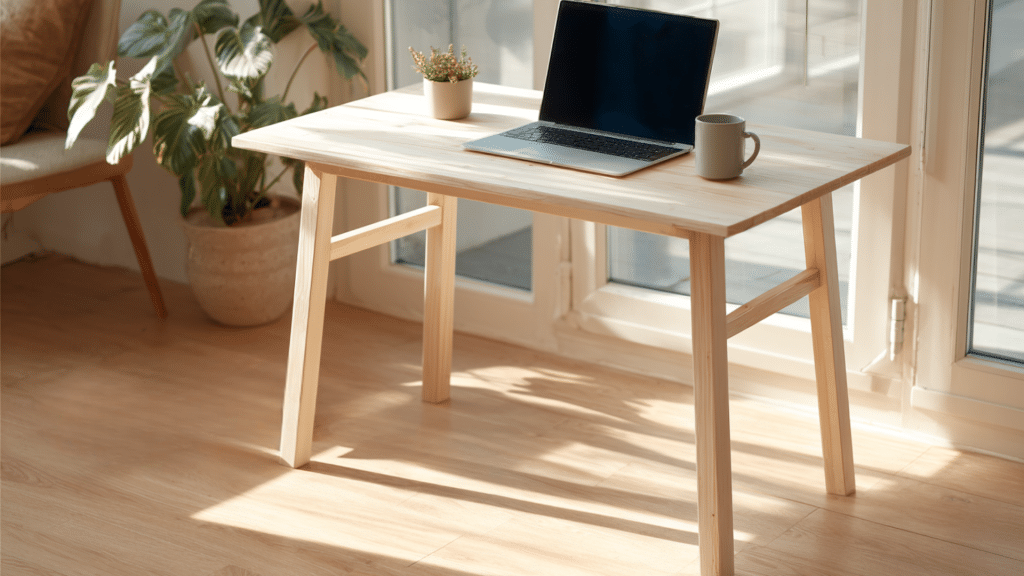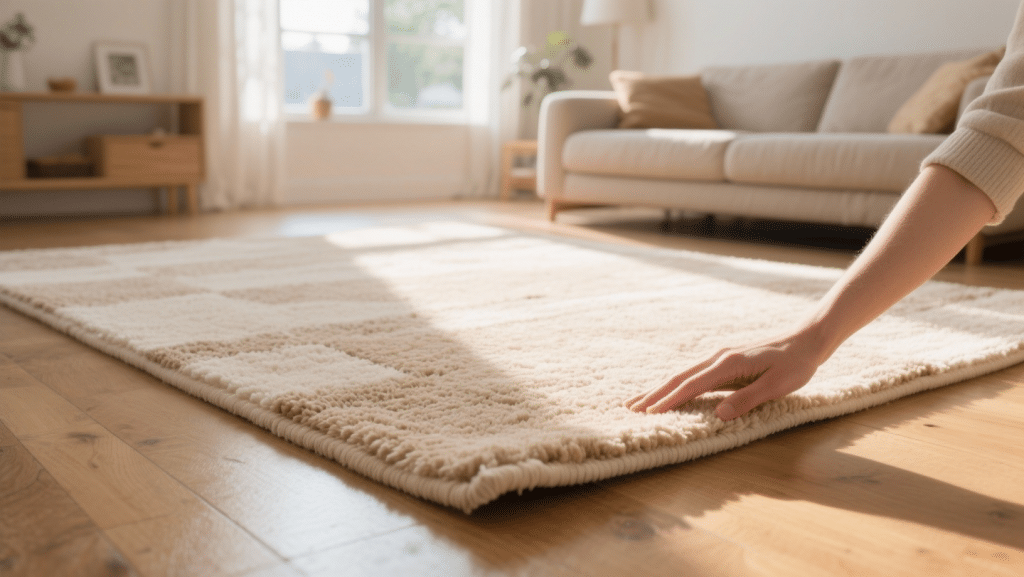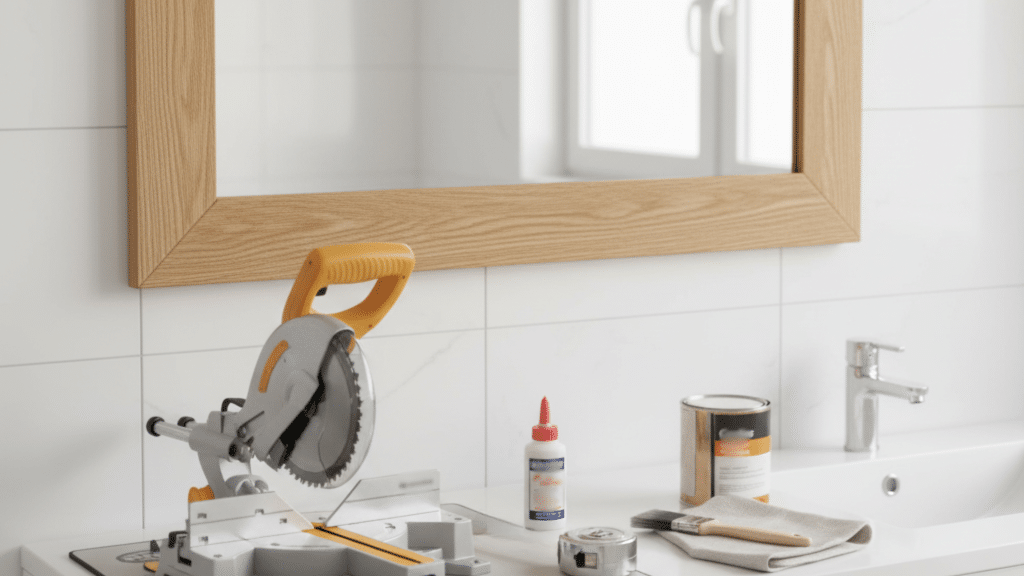People want outdoor spaces that feel like vacation getaways. But most pool areas look plain and ordinary.
The right materials can change everything, and that’s where a travertine pool deck comes in.
This natural stone offers the resort-style look people crave. It stays cool underfoot, handles water beautifully, and lasts for years. Plus, it fits almost any design style.
This blog will break down everything about travertine, from why it stays cool on hot days to the colors and finishes that match your style.
How Travertine Stone Works
Travertine has built-in features that make it perfect for wet environments.
The stone forms naturally around mineral springs, so it’s used to water from day one. This gives it properties that work beautifully around pools.
The porous structure allows water to drain through instead of pooling on the surface. This also means the deck dries faster than solid materials like concrete.
Another key feature is its low heat absorption. The stone’s light color and textured surface reflect sunlight rather than soaking it up.
That’s why it stays cool even when the sun beats down all afternoon. Plus, the natural texture provides grip, reducing slip risks.
Travertine Pool Deck Designs and Color Options Worth Trying
Travertine comes in more styles than most people realize. From classic beige to rich walnut tones, there’s a color and finish for every taste.
Here are a few popular design ideas that can turn any pool area into something special.
1. Classic Cream Travertine

Soft ivory and cream shades create a bright, clean look that never goes out of style. This color reflects sunlight instead of absorbing it, keeping the surface cooler.
It pairs well with any outdoor furniture and works beautifully with blue pool water.
2. Noce Walnut Tones

Rich brown and walnut hues add warmth and depth to your pool area. These darker tones hide stains better than lighter colors. They create a cozy, intimate feel that’s perfect for evening gatherings.
3. Silver Travertine Mix

Cool gray and silver tones give your deck a modern, complex appearance. This color palette complements modern homes beautifully. It’s a great choice if you want something different from traditional beige.
4. Tumbled Finish for Rustic Appeal
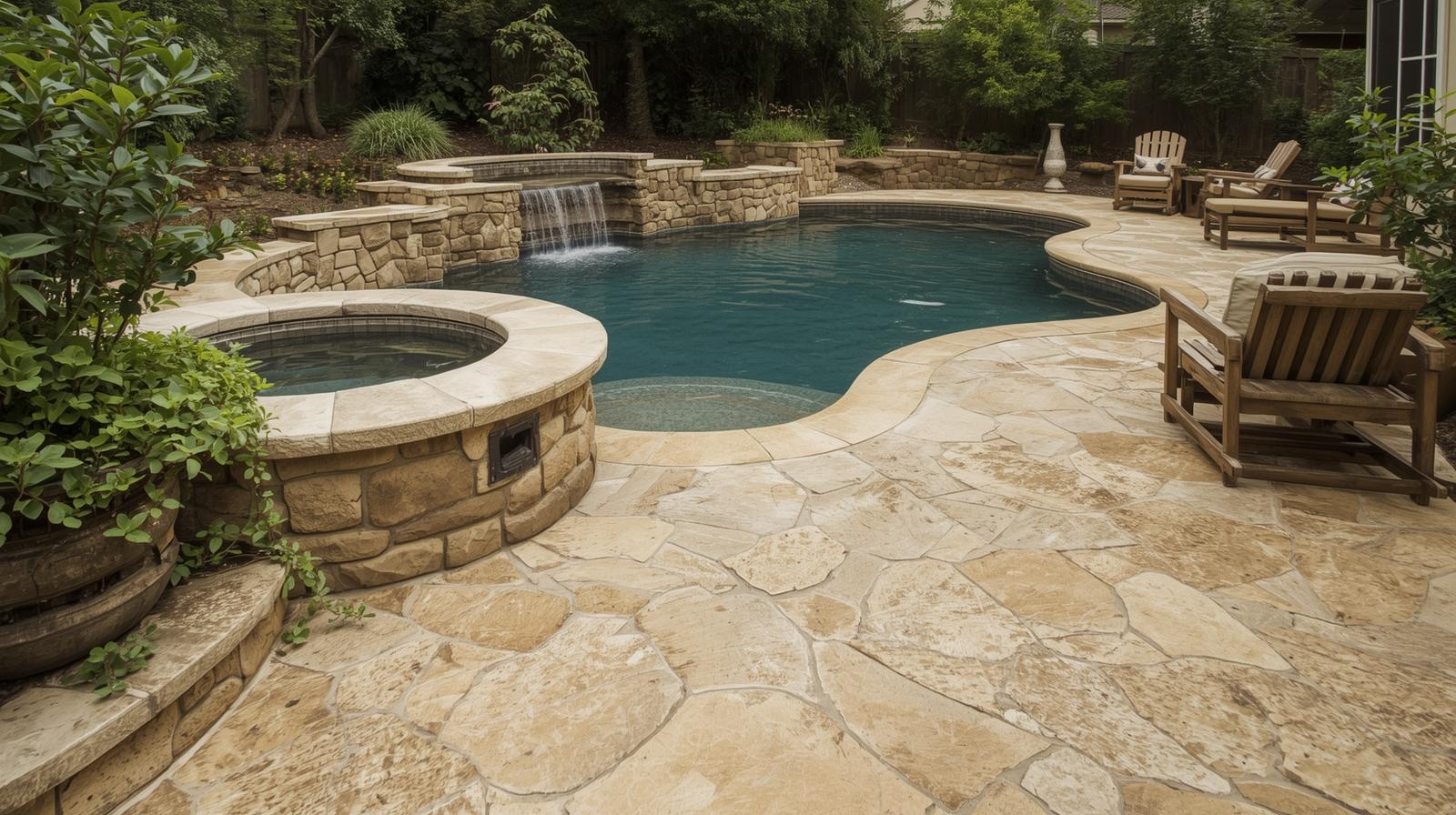
Tumbled travertine has rounded edges and a worn, aged look. The surface feels softer underfoot and adds character to your space. Available in beige, tan, and gold tones, it creates that old-world charm.
5. French Pattern Layout

This design uses different tile sizes arranged in a repeating pattern. It adds visual interest without feeling too busy.
Works best with lighter colors like ivory, beige, or light gold.
6. Brushed and Chiseled Edges

Hand-chiseled edges give each tile a rugged, natural appearance. The brushed surface provides good traction when wet. This is popular in medium browns and tans for a truly organic feel.
7. Large Format Pavers
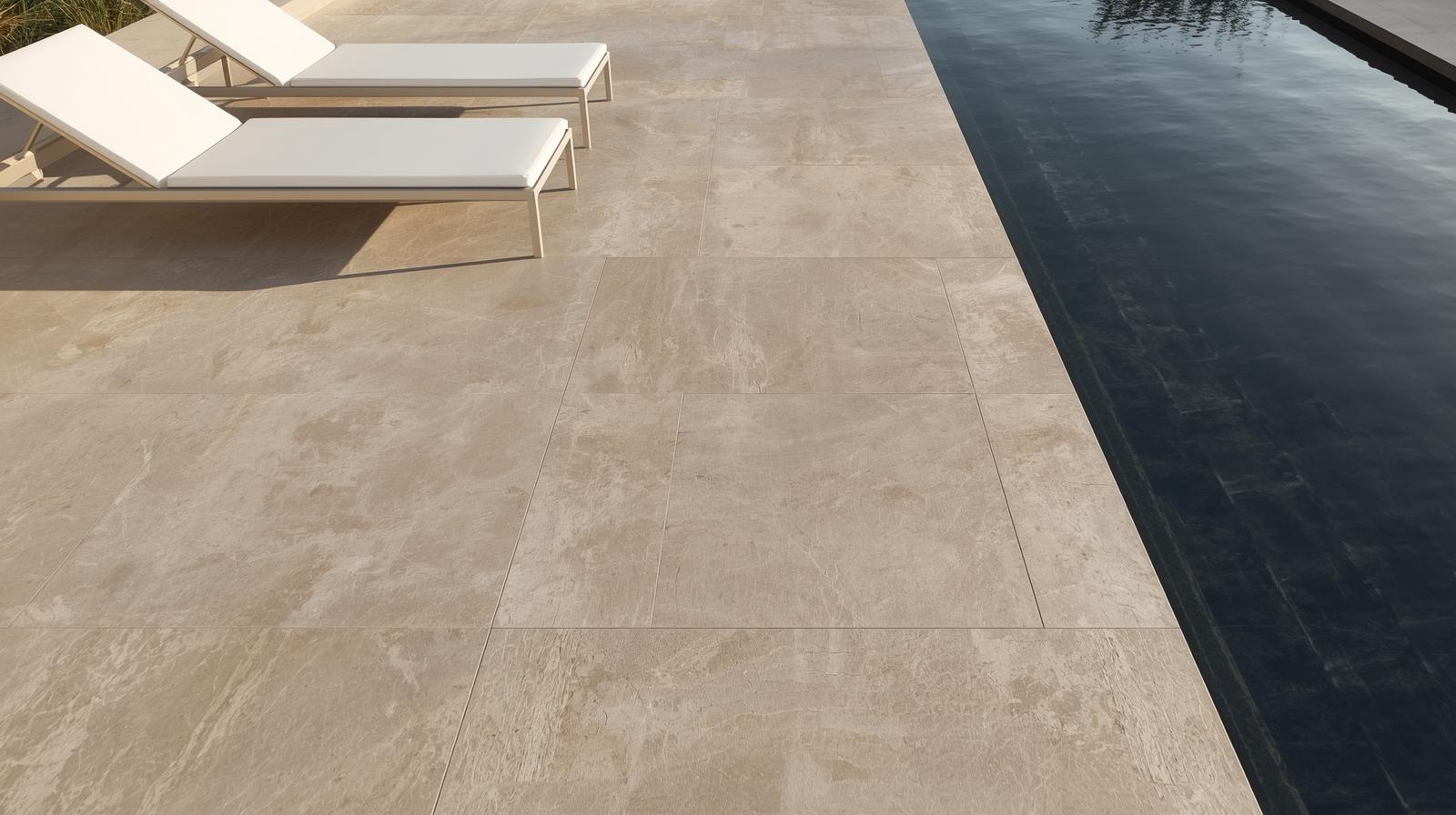
Bigger tiles mean fewer grout lines and a cleaner, more open look. These work especially well around modern pool designs. The product is available in all colors, but silver and light beige are customer favorites.
8. Mixed Color Blend
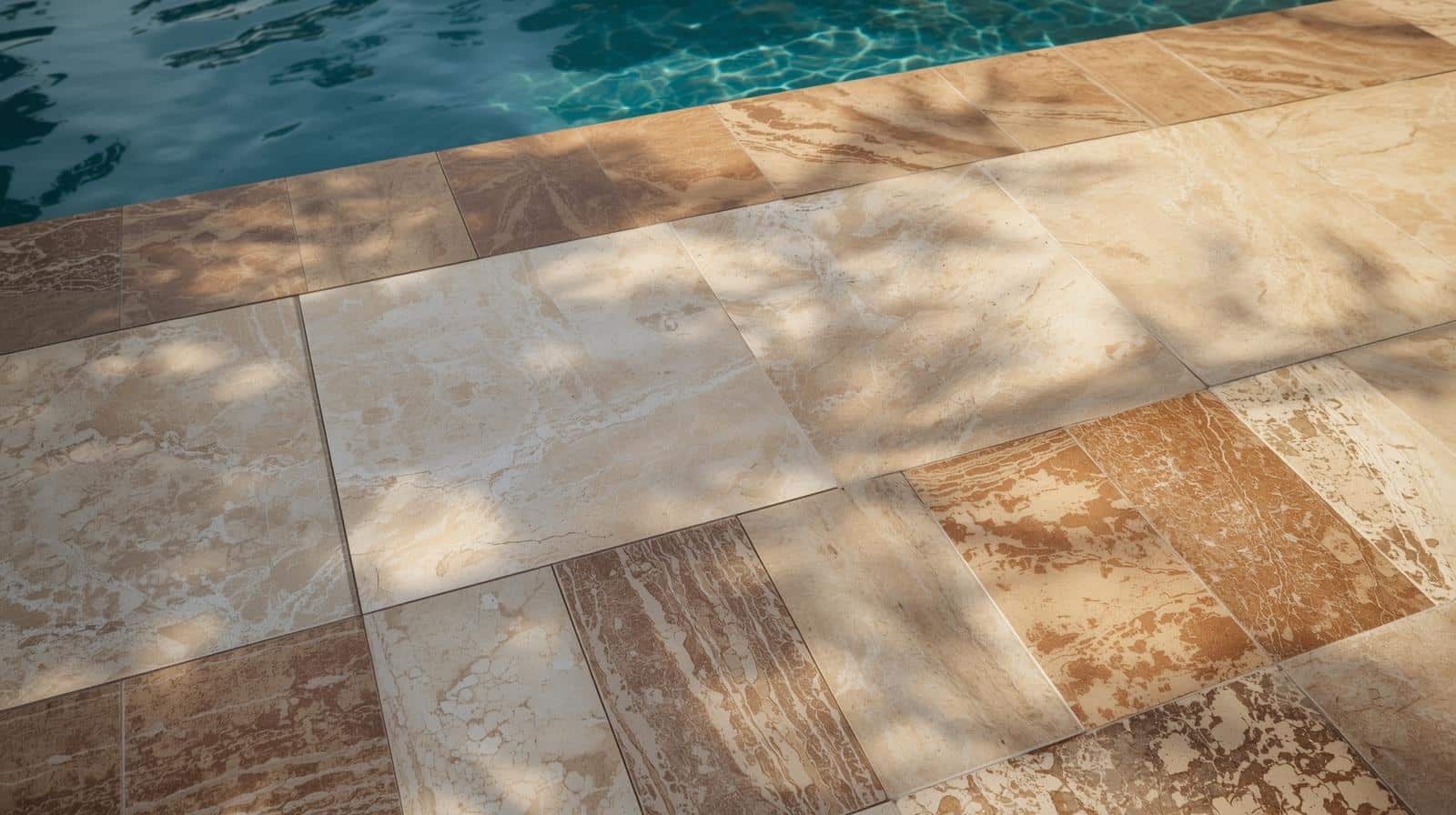
Combining two or three shades creates depth and movement across your deck. Try mixing ivory with light gold, or beige with walnut. This approach hides wear and tear better than single-color installations.
9. Bullnose Coping Accent
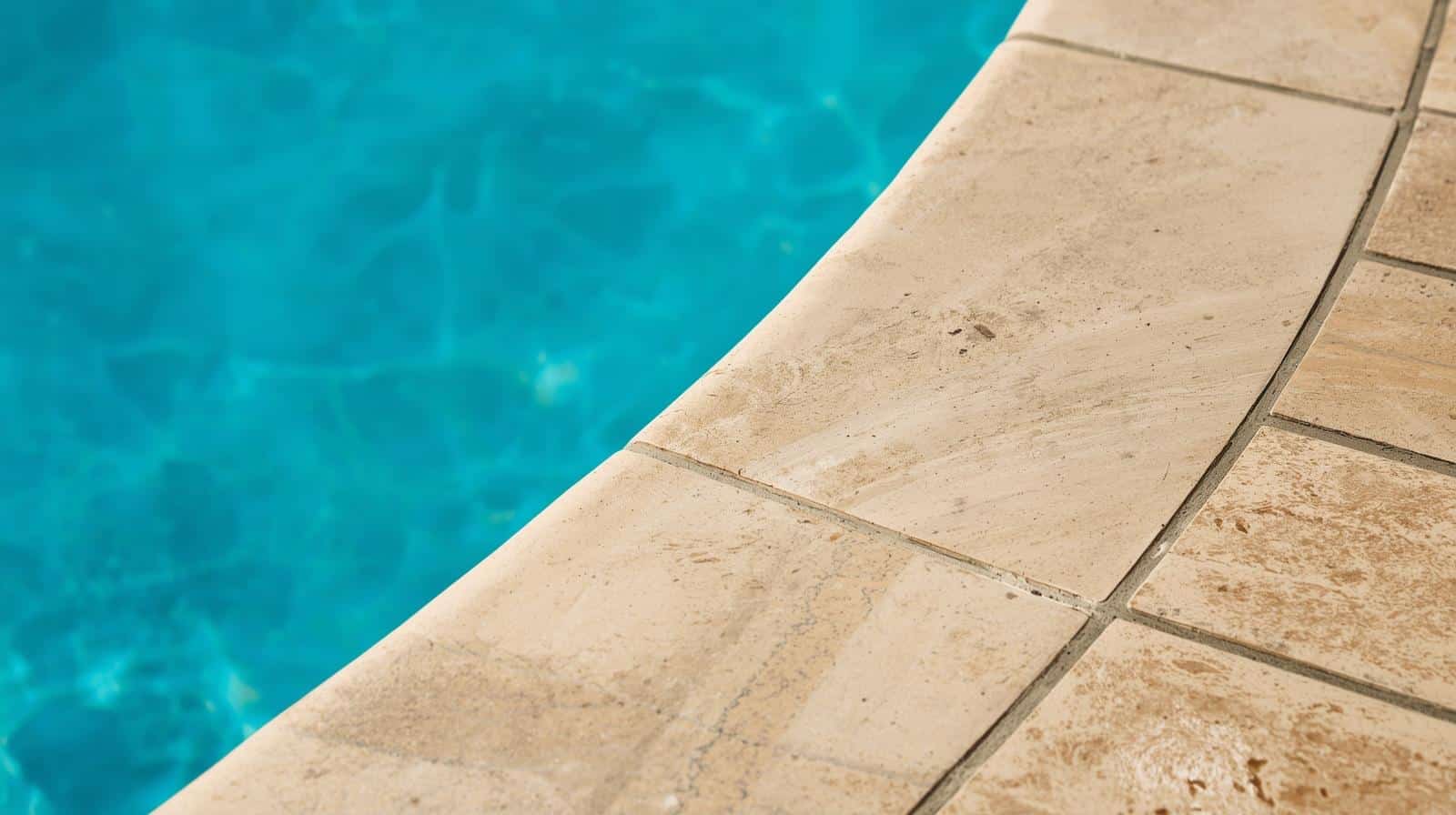
Rounded bullnose edges around the pool’s perimeter add a polished, finished touch. The smooth curve looks great and feels comfortable. It is usually done in a shade lighter than the main deck for contrast.
10. Honed Smooth Surface
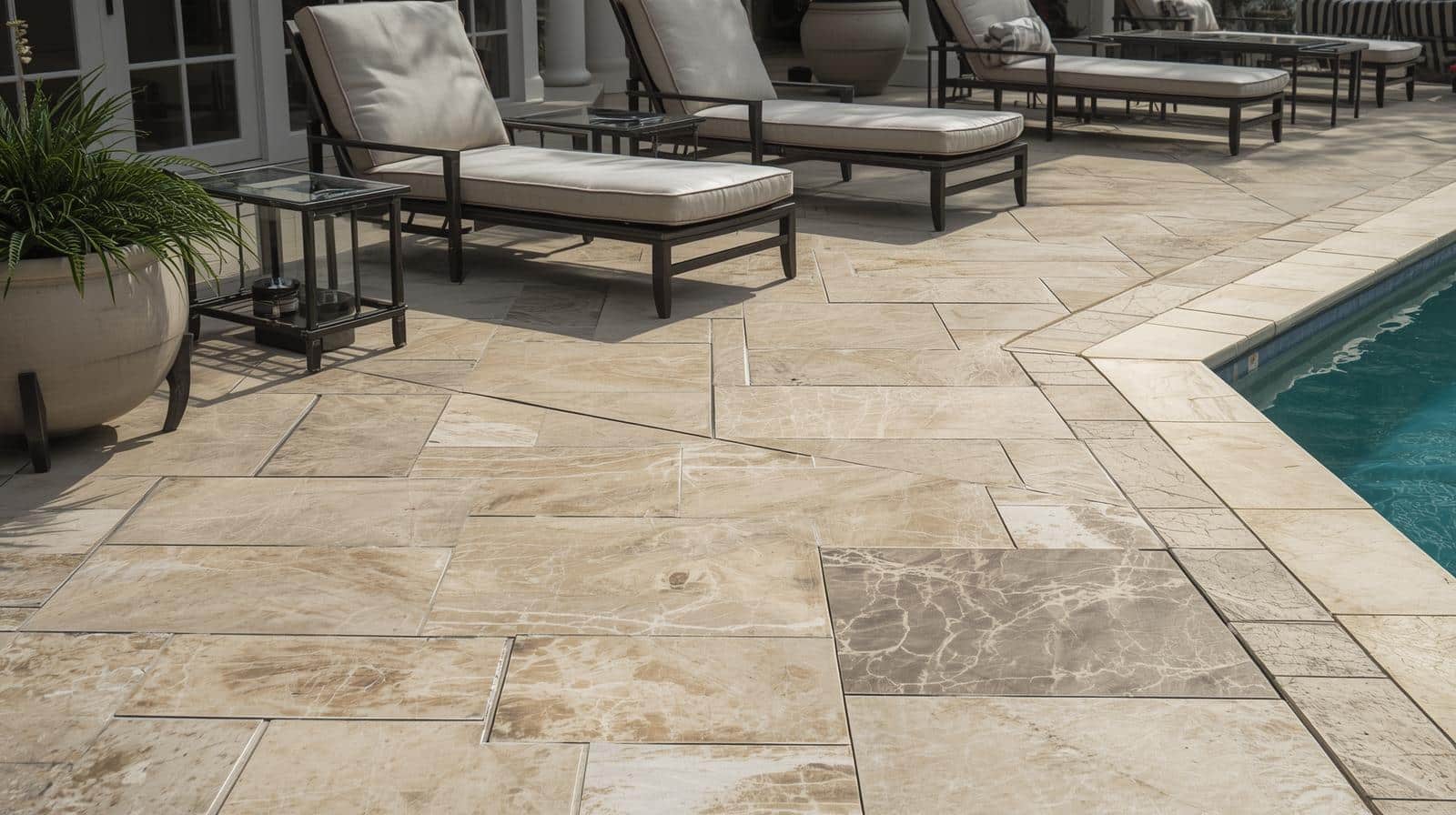
A honed finish gives you a flat, matte surface. It shows off the stone’s natural veining beautifully. These are best in medium tones like tan, beige, or light brown.
Benefits and Drawbacks You Should Know
Every material has its ups and downs, and travertine is no different.
Before you commit to a travertine pool deck, it’s smart to realise what you’re getting into. Here’s an honest look at the good and the not-so-good.
Benefits:
- Stays Cool in Heat – The stone doesn’t absorb much heat, so it remains comfortable to walk on even during hot summer days.
- Lasts for Decades – With proper care, travertine can last 50 years or more without needing replacement.
- Natural Beauty – Each piece has unique patterns and colors that you can’t get with artificial materials.
- Increases Home Value – Quality stone surfaces make your property more attractive to future buyers.
- Easy Repairs – Damaged tiles can be replaced individually without redoing the entire deck.
Drawbacks:
- Higher Initial Cost – Travertine costs more upfront than concrete or standard pavers.
- Needs Sealing – You’ll need to reseal the surface every few years to protect against stains and water damage.
- Can Be Slippery When Wet – Polished finishes require careful attention, though textured options provide better grip.
- Requires Professional Installation – This isn’t a DIY project for most people, adding to overall costs.
Travertine Pool Decks vs. Other Deck Materials
Choosing the right pool deck material can be burdensome with so many options available. Each material has different costs, maintenance needs, and lifespans.
This comparison table breaks down how travertine stacks up against other popular choices.
| Material | Cost | Heat Resistance | Lifespan | Maintenance | Best For |
|---|---|---|---|---|---|
| Travertine | High | Excellent – stays cool | 50+ years | Moderate – needs sealing | Luxury look, long-term value |
| Concrete | Low to Medium | Poor – gets very hot | 25-30 years | Low – occasional sealing | Budget-conscious projects |
| Pavers | Medium | Fair to Good | 25-50 years | Low to Moderate | DIY installations |
| Natural Stone (Granite/Slate) | High to Very High | Good | 50+ years | Moderate to High | Unique, upscale designs |
| Wood Decking | Medium to High | Good – naturally cool | 15-25 years | High – regular staining | Above-ground pools |
| Stamped Concrete | Medium | Poor – absorbs heat | 20-25 years | Moderate – resealing needed | Decorative patterns on a budget |
What People are Saying
People who’ve installed travertine around their pools share mixed experiences.
Many love how the stone stays cool even when temperatures hit 90 degrees or higher. They appreciate the natural look and say guests always compliment the upscale appearance.
Several mention that their decks still look great after ten or fifteen years.
On the flip side, some landowners wish they’d known about the maintenance beforehand. Sealing the surface every few years takes time and effort.
A few mention that pool chemicals can stain the stone if not cleaned up quickly. Others found the installation cost higher than expected, especially when adding custom patterns or coping.
The consensus? Most people feel the beauty and comfort outweigh the extra work.
They’d choose travertine again but would budget more for professional sealing. Those who regretted it usually chose polished finishes that became too slippery when wet.
Final Thoughts
A pool deck can completely change how your outdoor space looks and feels. It’s an investment that pays off in comfort, style, and lasting quality.
Yes, it costs more upfront and needs some care, but most people say it’s worth every penny.
Think about what matters most to you: staying cool on hot days, having a beautiful backyard, or adding value to your home. Travertine checks all those boxes.
Want to see travertine pool deck samples in person? Contact a local stone installer for a free quote.



